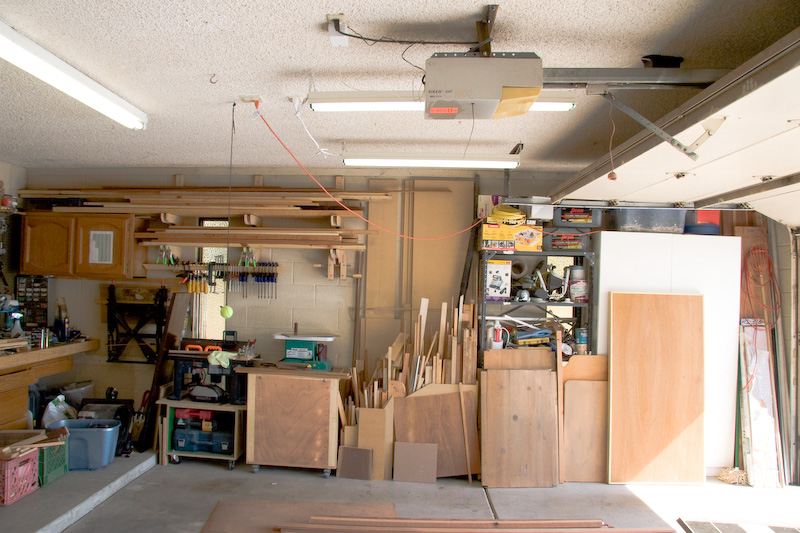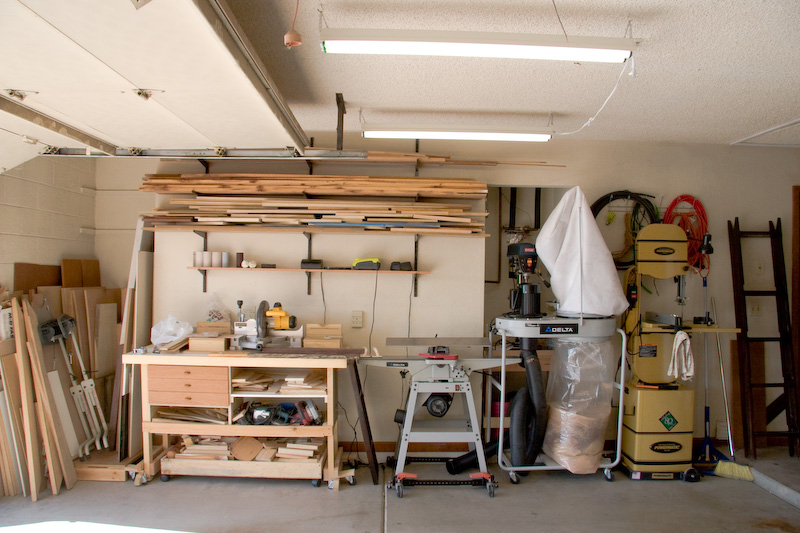I have a lumber stored in a variety of places. As the floor space is at a premium the racks start at ~5ft off the floor. I then have 2 nooks where I can store boards or sheet goods on their ends. I have a cutoff bin for pieces up to 3 or 4 feet and a small cutt off bin under the mobile bench (CMS is on it). I am a bit more organized than when these pics where taken but the lumber remains in the same places


Lumber Rack
Collapse
This topic is closed.
X
X
-
Jon
Phoenix AZ - It's a dry heat
________________________________
We all make mistakes and I should know I've made enough of them
techzibits.com -
I think I chronicled how I picked and tested my arms...somewhere in a post.I'm starting to think about storing materials, mostly solid lumber, in my new shop (house should have a roof this week or next if the snow lets up). I do not have suitable covered space outdoors to store lumber that can't be stored inside so there are likely to be shelves for lumber everywhere and then some.
This thread had some very creative designs for lumber racks but I'm curious to know lengths on the arms. It appears most are 12"wide. I'm thinking I'd *like* something wider and I've set aside a space that's 24 inches wide and 8' long on one wall, plus space above some of the machines that will be on mobile bases.
By my rough calculations, 1' wide arms spaced 12" vertically and 16" laterally means each set of rack arms will be supporting 400-500 pounds (at 60-80 pounds per cubic foot, which is what Loring used for his calcs). 24 inch arms will support twice as much, or between 200 and 250 pounds per arm. I've run a bunch of beam calculations and the wood arms in this post appear to be adequate, even if I put all the load at the end of the arm. However, I'm curious about the arm lengths Loring and Big Tim used.
Depending on how they are attached, there's a lot of variables.
I used conduit reinforced with an internal dowel; conduit because it was real cheap pipe and dowel because the conduit wanted to buckle right where it was inserted into the hole in the 2x4 with the full load hanging on the end. Longer lengths increase the canitlever bending moment. A tapered arm is a good idea because the force distribution will be smaller going toward the tip. In the case of the pipe, the force tended to buckle the pipe at the the support point, where the highest force was.
In my case I overdesigned a bit, wanting to hold 100 lbs at the tip which put more force on the pipe than 400 lbs a couple of inches from the post.
There might come a day when you have a stack of some wide boards and sliding them off the arms would do just that.
Anyway, making the arms longer just magnifies the forces by the lever principles. Loring in Katy, TX USA
Loring in Katy, TX USA
If your only tool is a hammer, you tend to treat all problems as if they were nails.
BT3 FAQ - https://www.sawdustzone.org/forum/di...sked-questionsComment
Footer Ad
Collapse

Comment